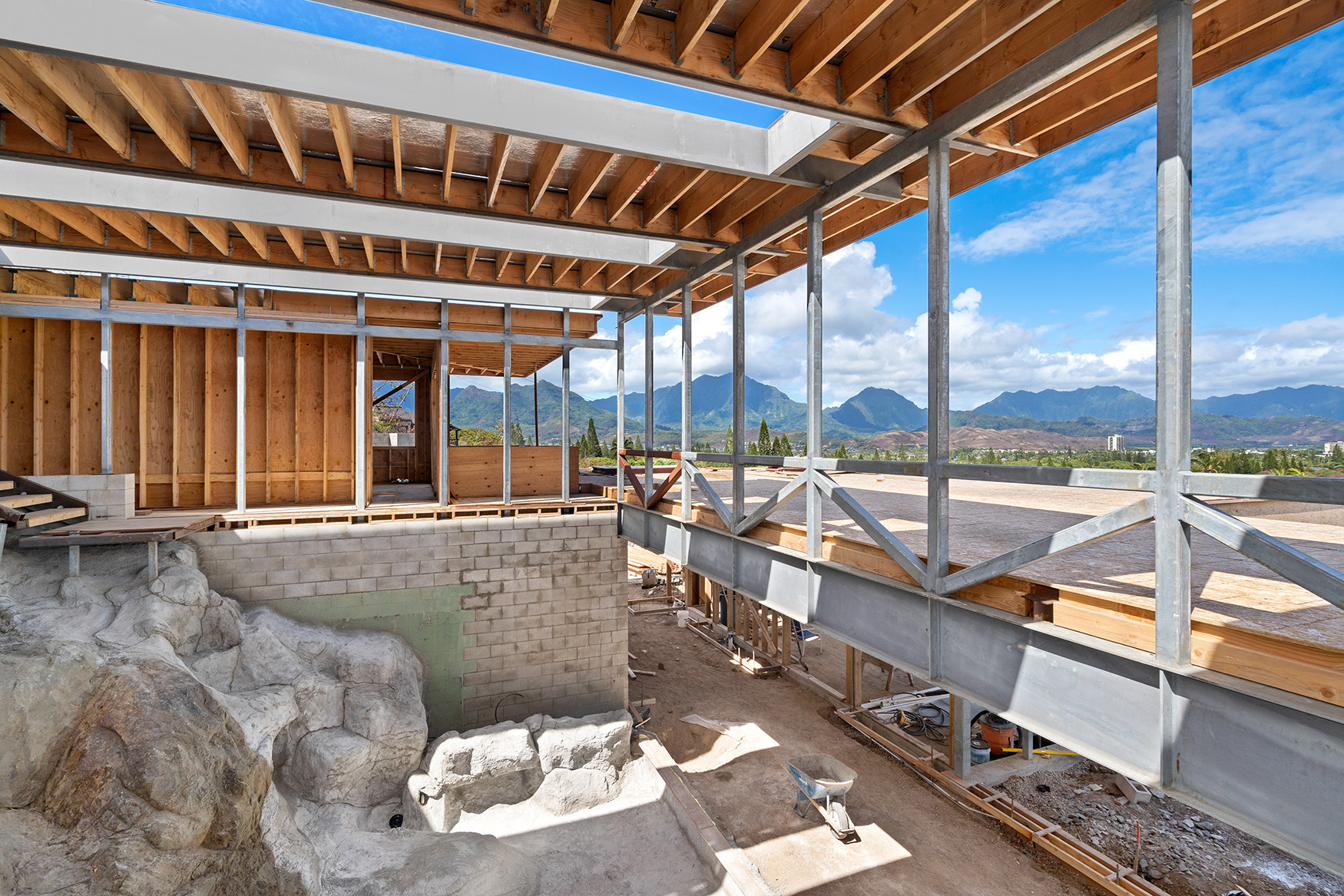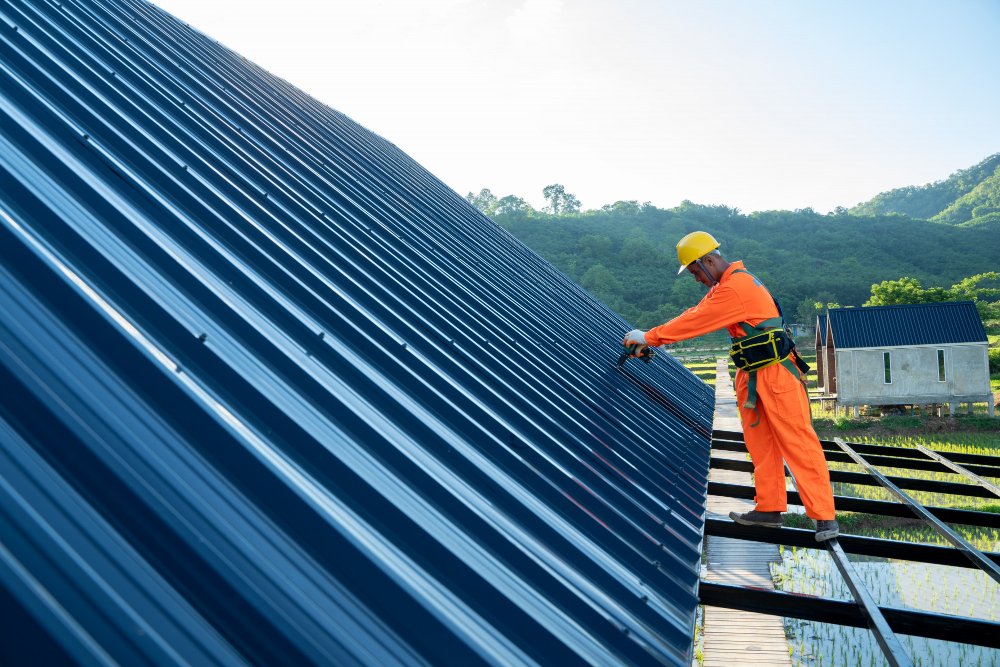Usual Fixings in Roof That Every Property Owner Must Be Mindful Of
Roofing leaks, tile damage, and clogged seamless gutters can all jeopardize your home's honesty. What actions can you take to guarantee your roof covering stays in top problem?
Determining Roofing System Leakages
Exactly how do you understand if your roofing system is leaking? Begin by checking your ceilings and wall surfaces for water stains or staining. If you notice dark spots or peeling off paint, that's a red flag. Next off, examine your attic room. Seek moist insulation or water beads on beams, which can suggest a leakage. Throughout rainfall, order a flashlight and check for any indications of dampness. Focus on the roof covering's incline and valleys, as these areas commonly accumulate water.
Don't neglect to analyze your roofing from the exterior. Furthermore, check blinking around smokeshafts and vents; damaged blinking can lead to leakages. Disregarding the issue can lead to more severe damage and pricey fixings down the line.
Roof Shingles Damage and Substitute
When it involves roof, shingle damages can cause bigger issues otherwise attended to quickly. You'll intend to identify the different kinds of damage and know the actions for replacing your shingles. Allow's explore what you require to do to keep your roof in leading form.
Types of Shingle Damage
Although shingles are created to stand up to the aspects, various sorts of damage can compromise their honesty over time. One typical problem is crinkling, where the sides or edges of the shingles raise, often due to age or inappropriate setup. Cracking can also happen, usually from extreme temperature level fluctuations or influence. Missing shingles are one more concern; high winds or dropping particles can quickly remove them. Furthermore, you might see granule loss, where the protective granules deteriorate, subjecting the underlying material to UV rays and wetness. Ultimately, algae growth can establish, causing unpleasant streaks and potential destruction. Recognizing these kinds of roof shingles damage enables you to resolve problems promptly and keep your roof's condition.
Substitute Refine Steps
Replacing damaged shingles includes a methodical strategy to ensure your roofing stays sturdy and protective. Start by recognizing the damaged roof shingles-- check for fractures, crinkling, or missing out on items (oahu roofing). When you have actually pinpointed the trouble areas, collect your products: new shingles, roof nails, and a hammer
Next, very carefully remove the damaged tiles, making certain not to disrupt the surrounding ones. Afterwards, slide the brand-new roof shingles into area, making sure they straighten correctly with the existing shingles. Safeguard them with nails, and seal any kind of subjected areas with roof covering adhesive to avoid leaks. Lastly, evaluate your work to establish every little thing's protected and limited. With these steps, you can restore your roofing system's stability and lengthen its lifespan.
Clogged Gutters and Downspouts
When particles builds up, it stops water from flowing away from your roofing system and foundation. This can create water to pool on your roofing, increasing the threat of leakages and damages to your roof shingles.

Bear in mind, keeping clear gutters is necessary for shielding your home's roof and total honesty. Normal checks will certainly save you cash and headache down the line, guaranteeing your roof system works properly.
Blinking Concerns
When it concerns your roof covering, blinking plays an essential function in stopping leakages. You need to be conscious of the various sorts of flashing materials and the typical problems that can arise. Knowing just how to fix these issues can save you time and money down the line.
Kinds of Flashing Materials
Aluminum flashing is lightweight, rust-resistant, and simple to set up, making it preferred for lots of roofing systems. If you're looking for adaptability, rubberized flashing can adapt to various roofing system forms, giving strong seals. Choosing the ideal flashing material can significantly enhance your roof's long life and effectiveness, so be sure to evaluate your options very carefully.
Usual Blinking Problems
Also the best blinking can experience problems over time, leading to potential leakages and damages. If the blinking isn't fitted well against the roofing, water can leak beneath, causing rot and mold. An additional trouble is deterioration, particularly with steel blinking, which can compromise over time due to direct exposure to the elements.
Blinking Repair Strategies
Resolving blinking concerns immediately can avoid further damage to your roofing system. If you see any type of leakages or cracks, it's important to act quickly. Beginning by checking the flashing around chimneys, vents, and valleys for any type of signs of wear and tear. If it's damaged, you can commonly fix it with roofing cement or sealer. For more significant damage, consider changing the flashing totally. Remove the old flashing, making sure the area is clean, and afterwards set up the brand-new flashing, protecting it with nails and applying sealant. Always look for proper overlap to stop water intrusion. Regular maintenance and inspections can aid capture these issues early, conserving you time and money in the future. Don't wait till it's also late!
Ventilation Troubles
When your roof covering lacks appropriate ventilation, it can cause a host of troubles that jeopardize its stability and your home's convenience. Poor air flow traps warmth and moisture in your attic, causing roof shingles to degrade faster and promoting mold and mildew growth. This can increase your energy costs as your HVAC system burns the midnight oil to keep a comfortable temperature.

On a regular basis inspecting your air flow system is critical, specifically after serious climate or modifications in the seasons. If you locate your roofing system isn't ventilated correctly, don't be reluctant to call a roofing expert. They'll help assure your roofing remains in leading problem, shielding your investment and boosting your home.
Roof Slits and Holes
Poor ventilation isn't the only hazard to your roofing's stability; roof covering punctures and openings can result in serious issues as well. These openings can enable water to seep into your home, creating mold and mildew, structural damages, and expensive repair services. You may not even discover a leak until it's too late, especially if it's tiny or concealed under roof covering materials.
Normal examinations are necessary. Examine your roofing system after hefty storms or extreme climate condition, as particles can easily create punctures. If you spot any type of holes, do not wait to act. You may be attracted to patch them up on your own, but it's usually best to call a professional. They can ensure an appropriate repair service and avoid additional damage. Remember, attending to roofing leaks and holes quickly secures your home and saves you money in the long run. Keep your roof covering in top problem by staying cautious concerning its maintenance.
Moss and Algae Growth
Moss and algae development can silently take hold on your roofing, triggering substantial issues over time. These organisms grow in moist, shaded locations, usually causing an accumulation of wetness that can degrade roofing materials. It's a sign that you need to act rapidly. if you discover eco-friendly streaks or patches.

You can get rid of moss and algae using a mixture of water and bleach or by hiring a specialist. Installing zinc or copper strips along the ridge of your roofing system can additionally discourage future development. Staying proactive will certainly aid keep your roofing system's integrity and stop pricey repair services down the line.
Regularly Asked Questions
Just how Usually Should I Examine My Roofing System for Issues?
You need to inspect your roof at the very least twice a year, preferably in spring and autumn. Inspect it you can find out more after serious weather condition events. Normal assessments aid you catch potential concerns prior to they become costly repair work.
Can I Do Roof Fixes Myself?
You can execute roof fixings on your own, but it's important you evaluate your abilities and safety. Consider working with a specialist if you're not sure. When to look for assistance for a lot more intricate concerns., constantly prioritize safety and understand.
What Are the Indicators I Need a Roof Substitute?
You'll understand it's time for a roof covering replacement if you identify significant leakages, considerable tile damages, sagging areas, or visible mold. Do not wait too long; addressing these indicators early can save you cash in the long run.
Exactly how Long Does a Roofing Repair Work Generally Last?
A roofing system fixing usually lasts anywhere from 5 to 15 years, relying on problems and products. oahu roofing. You need to monitor its condition frequently to capture any possible concerns prior to they escalate into bigger problems
What Is the most effective Period for Roof Covering Repairs?
The very best period for roof covering fixings is usually springtime or fall. During these times, temperatures are mild, and climate condition are more stable, permitting service providers to work effectively and ensuring your roofing gets the interest it requires.
Verdict
To sum up, remaining on top of common roof fixings can conserve you time and cash in the future. By consistently checking for leaks, roof shingles damage, and clogged up gutters, you're protecting your home from major problems. Don't forget to deal with ventilation problems and any kind of moss or algae growth, too. Watching on these factors will certainly assist maintain your roofing system's integrity and extend its life expectancy, inevitably securing your financial investment for many years to come.

Changing harmed roof shingles entails a methodical method to ensure your roofing system remains durable and safety.Addressing blinking issues quickly can avoid further damage to your roofing.Poor air flow isn't the only risk to your roofing's stability; roofing system punctures and holes can lead to major problems.